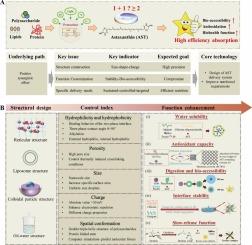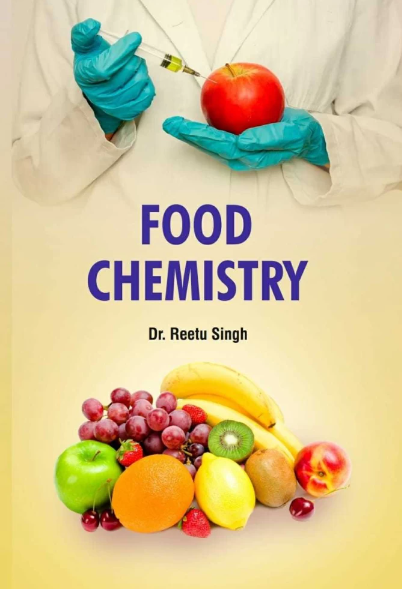Co-delivery of astaxanthin using positive synergistic effect from biomaterials: From structural design to functional regulation
IF 8.5
1区 农林科学
Q1 CHEMISTRY, APPLIED
引用次数: 0
Abstract
The powerful antioxidant properties of astaxanthin (AST) face two significant challenges: low water solubility and poor chemical stability. To overcome them, extensive research and development efforts have been directed toward creating effective delivery systems. Among them, the positive synergistic effect between biomaterials can be used to refine the design of delivery systems. Understanding the relationship between structure and function aids in tailoring applications to specific needs. This review outlines the challenges associated with delivering AST and reviews the mechanisms involved in creating delivery systems, specifically focusing on the structure-function relationship of biomaterials. It comprehensively introduces the positive synergistic effect of biomaterials with enhancing the functional properties of AST, and analyzes the impact of designed structures on function regulation and the application prospects of the delivery system in the food industry. The future demand for efficient delivery of AST will increasingly depend on the positive synergistic effect between biomaterials.


利用生物材料的积极协同效应共同递送虾青素:从结构设计到功能调节
虾青素(astaxanthin, AST)强大的抗氧化性能面临着水溶性低和化学稳定性差的两大挑战。为了克服这些问题,已经进行了广泛的研究和开发工作,以创建有效的交付系统。其中,生物材料之间的正向协同效应可用于优化给药系统的设计。理解结构和功能之间的关系有助于根据特定需求定制应用程序。本文概述了与传递AST相关的挑战,并回顾了创建传递系统所涉及的机制,特别关注生物材料的结构-功能关系。全面介绍了生物材料与增强AST功能特性的正向协同作用,分析了设计结构对功能调控的影响以及该输送系统在食品工业中的应用前景。未来对AST高效递送的需求将越来越依赖于生物材料之间的积极协同效应。
本文章由计算机程序翻译,如有差异,请以英文原文为准。
求助全文
约1分钟内获得全文
求助全文
来源期刊

Food Chemistry
工程技术-食品科技
CiteScore
16.30
自引率
10.20%
发文量
3130
审稿时长
122 days
期刊介绍:
Food Chemistry publishes original research papers dealing with the advancement of the chemistry and biochemistry of foods or the analytical methods/ approach used. All papers should focus on the novelty of the research carried out.
 求助内容:
求助内容: 应助结果提醒方式:
应助结果提醒方式:


